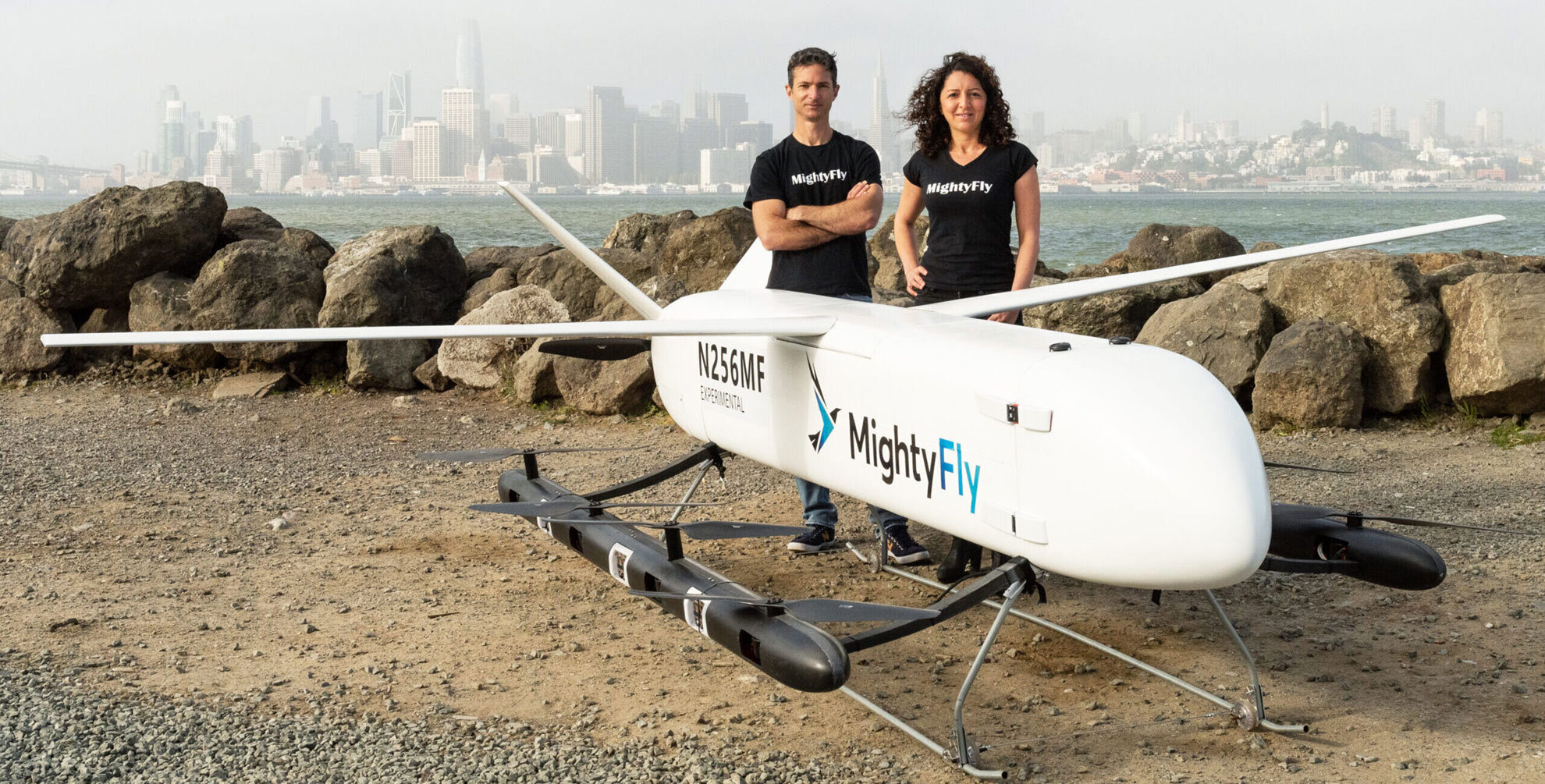Revolution.Aero Uplift: MightyFly plans same-day delivery cargo eVTOLs

exc-60d35f662a382a0059c7de10
Manal Habib and her co-founder, Scott Parker, met at the medical drone delivery company Zipline. Now their company MightyFly is gaining momentum after raising a $5.1m seed round in April this year. It received funding from 500 Startups, At One Ventures, Global Founders Capital, Graph Ventures, and Halogen Ventures.
MightyFly is targeting mid-mile logistics. It is focusing on routes from a distribution centre to a local store, a manufacturing facility or hospital. MightyFly’s wants to cut out vans and trucks from the logistics industry – with a focus on achieving “carbon neutrality and eventually going completely clean”.
There is also a cost benefit, according to her. The MightyFly aircraft will cost 70% of that which larger road-based logistics providers charge today.
“We need large autonomous cargo aircraft that carries multiple packages – marrying the autonomy with the economy of scale – to come up with a solution that can be bought faster and cheaper,” says Habib.
MightFly is creating hybrid-electric, autonomous eVTOL cargo drones. The target is same-day delivery from San Francisco to Los Angeles, within a few hours from a customer’s order.
“Our aircraft targets mid-mile logistics, given our cargo capacity and range. We will carry up to 500 pounds with our two fleets. The first fleet [MF-100] can carry 100 pounds, have a range of 600 miles and a speed of 150 miles per hour.”
It is taking a low-risk approach by starting service in rural areas of Southern California, which have very small populations. Next will be suburban and urban areas. As Habib says: “It will take more than five years to see a lot of autonomous aircraft flying over cities. First you have to crawl, then walk, then run.”
The company is also looking at Australia and Singapore.
Investor box
Seed round – $5.1m
(500 Startups, At One Ventures, Global Founders Capital, Graph Ventures, and Halogen Ventures)
MightyFly will consider going all-electric when the results became more favourable. “We need to see them [batteries] provide the energy, the capacity and efficiency we need. There are the other technologies like hydrogen cells that we are considering as well,”said Habib.
MightyFly recently received a special airworthiness certificate from the FAA. It is building a fleet of aircraft to perform proof-of-concept delivery service next year with a partner company. At the same time, it will try to gain part 135 certification for commercial delivery in the US.
Habib said the company was open to discussions with partners and hiring across the board. “One of our next milestones is to perform a pilot delivery service with a partnering customer to enable the future of logistics.”
Vertical plans to spend $300m to build and certify the VA-X4 – of which it has $50m – and another $140m to build a facility. The company projects that it would be able to achieve profitability and cash flow breakeven with annual sales of less than 100 aircraft.
“Emerging technologies are critical in the race to reduce carbon emissions and we are excited to partner with Vertical to develop the next generation of electric aircraft,” said Derek Kerr, chief financial officer at American.
Commercial operations of the VA-X4 are planned for 2024 following European Union Aviation Safety Agency (EASA) and UK Civil Aviation Authority (CAA) certification.
Aboulafia and other industry insiders say pre-orders are a great way for airlines to “get a lot of press attention for very little to possibly no money”, as well as to show investors a strategy to attract customers. And secondly, they “don’t want to be last and I better get in line just in case it turns out the store opens up,” added Aboulafia.
In 2020, over 2bn people purchased goods or services online. These orders would have been received, produced, checked for quality and then delivered to your doorstep – which is when the order is completed. The same is true for aircraft orders that run into the billions of dollars.







